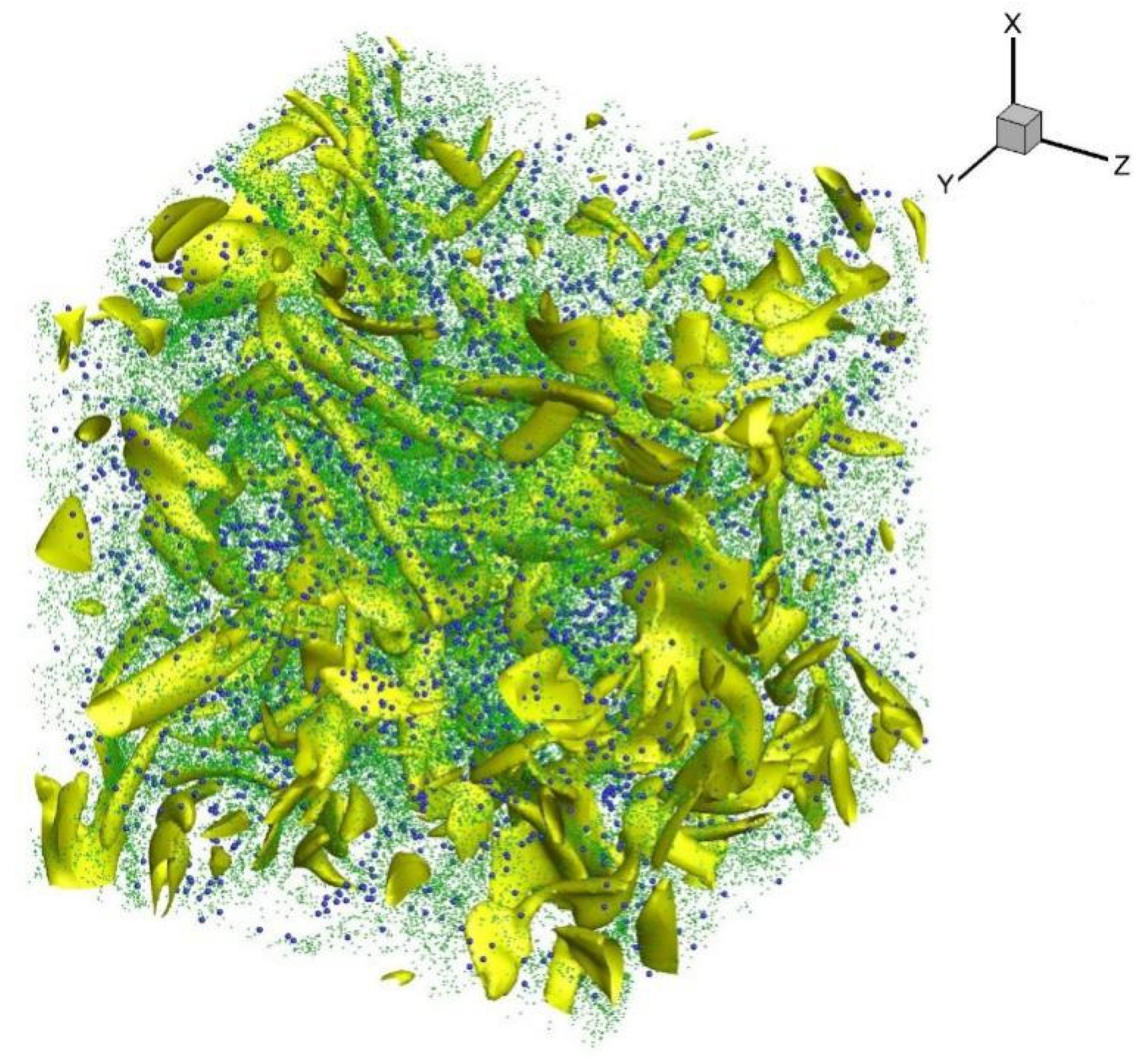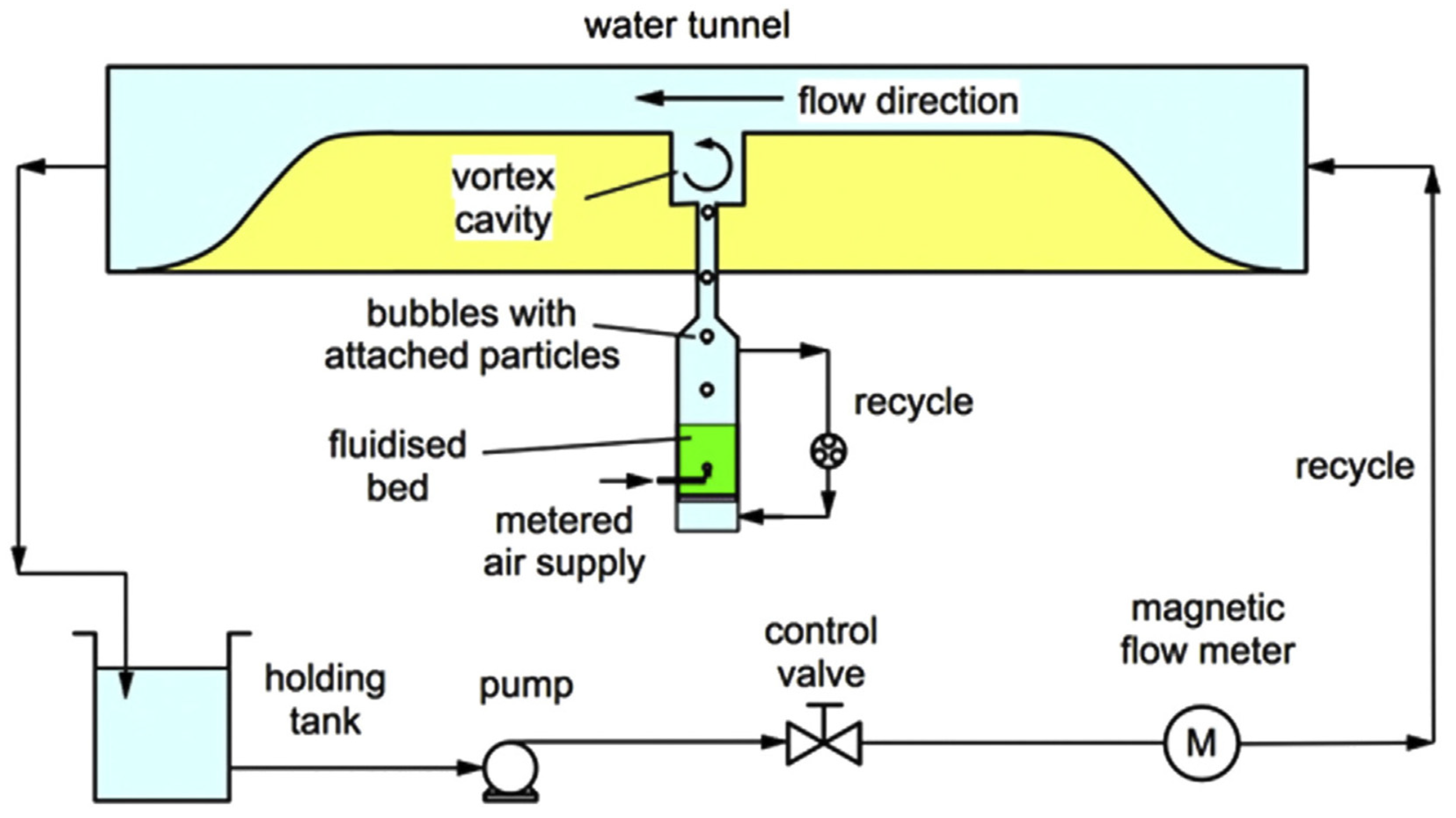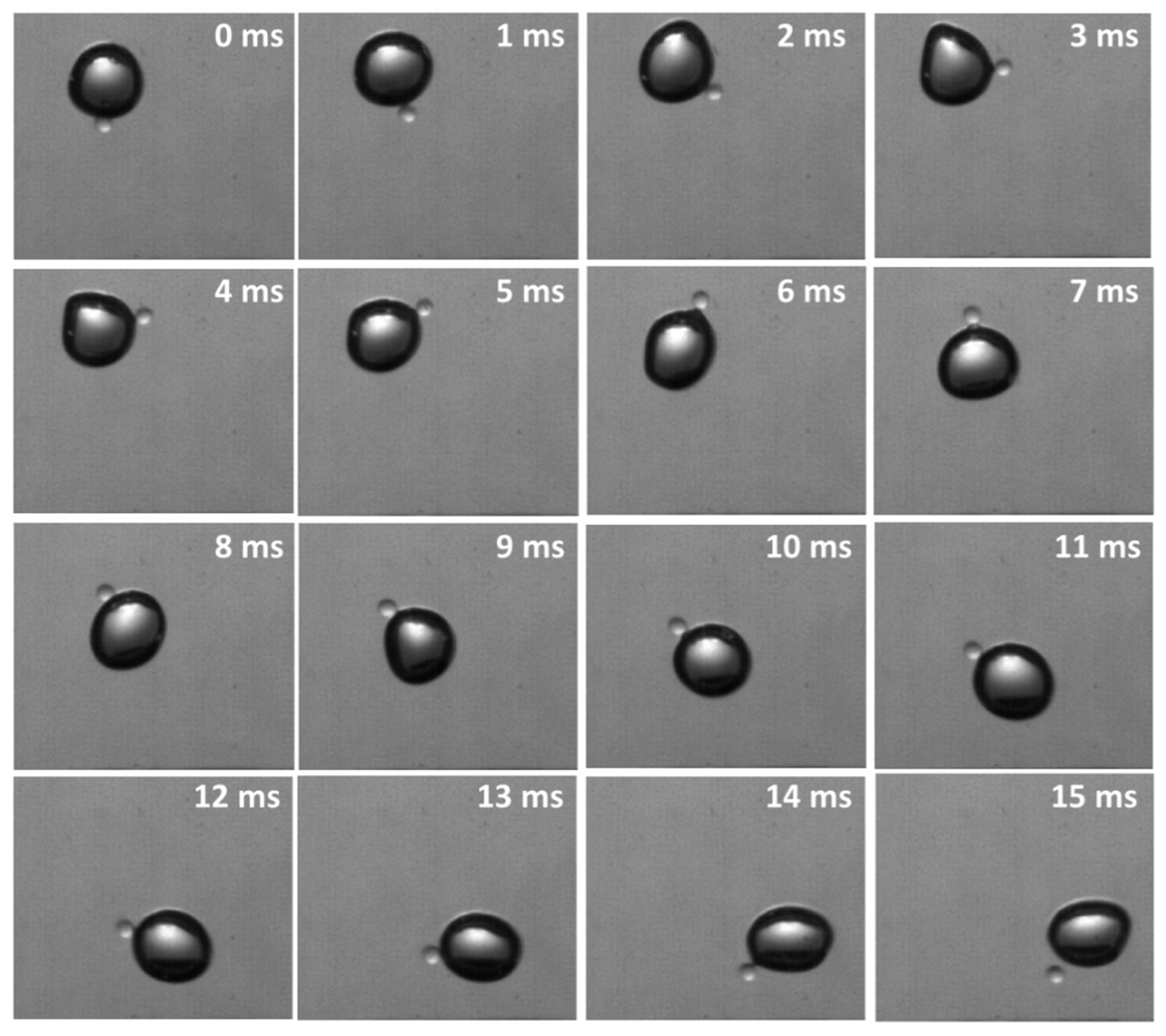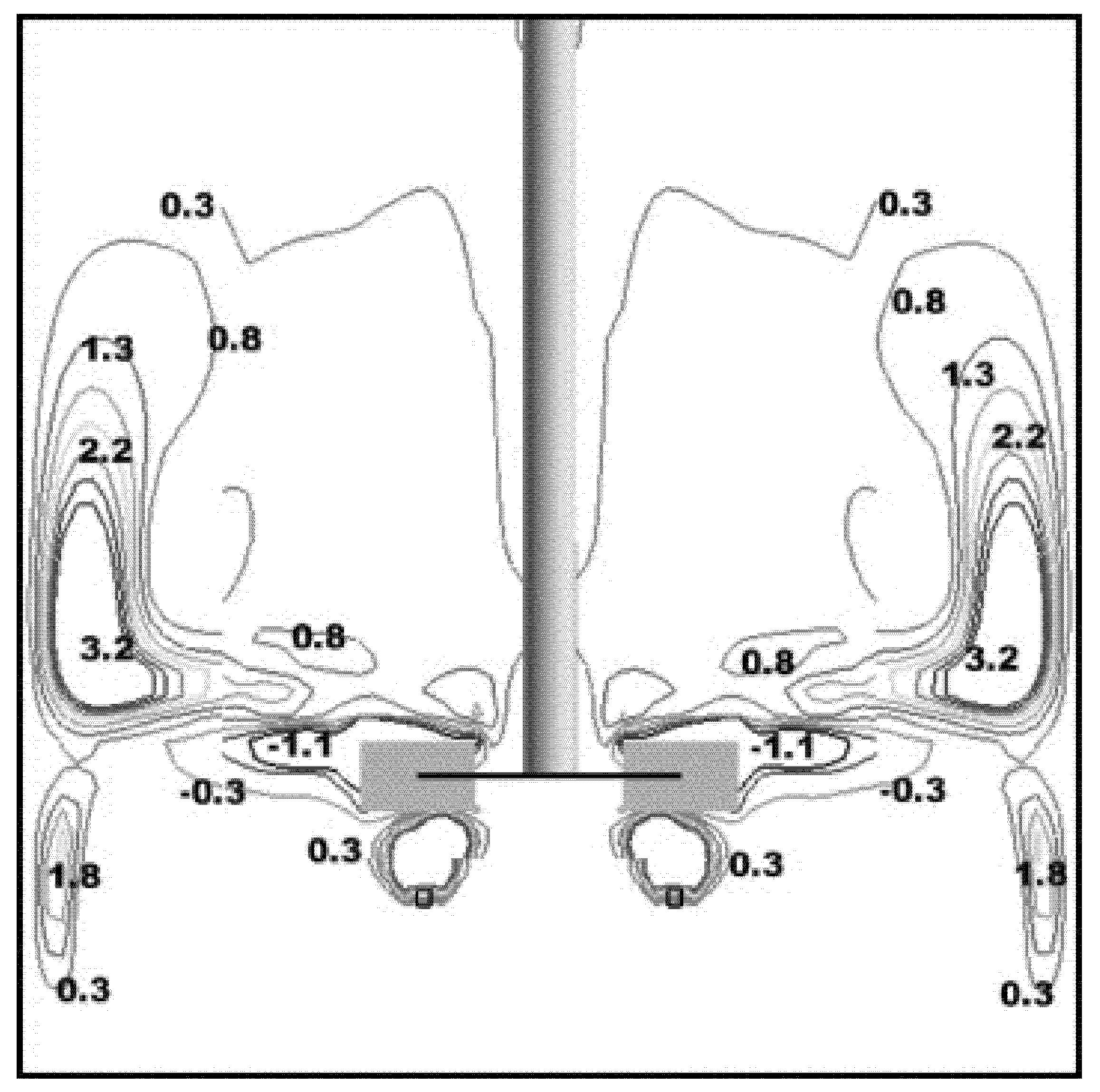A Rational Interpretation of the Role of Turbulence in Particle-Bubble Interactions
Abstract
:1. Introduction
2. Particle-Bubble Collision, Attachment and Detachment
2.1. Effects of Turbulence on Collision
2.2. Effects of Turbulence on Attachment
2.3. Effects of Turbulence on Detachment
3. Discussions and Recommendations for Further Work
4. Conclusions
Funding
Conflicts of Interest
References
- Arbiter, N. Flotation rates and flotation efficiency. Trans. AIME. Sept 1951, 791, 796. [Google Scholar]
- Jameson, G.; Nam, S.; Young, M.M. Physical factors affecting recovery rates in flotation. Miner. Sci. Eng. 1977, 9, 103–118. [Google Scholar]
- Gaudin, A.M.; Groh, J.O.; Henderson, H.B. Effect of particle size in flotation. Am. Inst. Min. Eng. Tech. Publ. 1931, 414, 3–23. [Google Scholar]
- Trahar, W.J. A rational interpretation of the role of particle size in flotation. Int. J. Miner. Process. 1981, 8, 289–327. [Google Scholar] [CrossRef]
- Jameson, G.J. Advances in fine and coarse particle flotation. Can. Metall. Q. 2010, 49, 325–330. [Google Scholar] [CrossRef]
- Miettinen, T.; Ralston, J.; Fornasiero, D. The limits of fine particle flotation. Miner. Eng. 2010, 23, 420–437. [Google Scholar] [CrossRef]
- Jameson, G.; Nguyen, A.; Ata, S. Froth Flotation: A Century of Innovation; Fuerstenau, M.C., Jameson, G.J., Yoon, R.-H., Eds.; SME: Denver, CO, USA, 2007; pp. 329–351. [Google Scholar]
- Ralston, J.; Dukhin, S. The interaction between particles and bubbles. Colloids Surf. A Physicochem. Eng. Asp. 1999, 151, 3–14. [Google Scholar] [CrossRef]
- Goel, S.; Jameson, G.J. Detachment of particles from bubbles in an agitated vessel. Miner. Eng. 2012, 36–38, 324–330. [Google Scholar] [CrossRef]
- Wang, G.; Bai, X.; Wu, C.; Li, W.; Liu, K.; Kiani, A. Recent advances in the beneficiation of ultrafine coal particles. Fuel Process. Technol. 2018, 178, 104–125. [Google Scholar] [CrossRef]
- Franks, G.V.; Forbes, E.; Oshitani, J.; Batterham, R.J. Economic, water and energy evaluation of early rejection of gangue from copper ores using a dry sand fluidised bed separator. Int. J. Miner. Process. 2015, 137, 43–51. [Google Scholar] [CrossRef]
- Li, D.; Wang, H.; Yang, L.; Yan, X.; Wang, L.; Zhang, H. Intensification effects of stirred fluid on liquid–solid, gas–liquid and gas–solid interactions in flotation: A review. Chem. Eng. Process. Process Intensif. 2020, 152, 107943. [Google Scholar] [CrossRef]
- Schubert, H. On the turbulence-controlled microprocesses in flotation machines. Int. J. Miner. Process. 1999, 56, 257–276. [Google Scholar] [CrossRef]
- Kowalczuk, P.B.; Sahbaz, O.; Drzymala, J. Maximum size of floating particles in different flotation cells. Miner. Eng. 2011, 24, 766–771. [Google Scholar] [CrossRef]
- Sahbaz, O.; Ercetin, U.; Oteyaka, B. Determination of turbulence and upper size limit in jameson flotation cell by the use of computational fluid dynamic modelling. Physicochem. Probl. Miner. Process. 2012, 48, 533–544. [Google Scholar]
- Ralston, J. Controlled flotation processes: Prediction and manipulation of bubble-particle capture. J. South. Afr. Inst. Min. Metall. 1999, 99, 27–34. [Google Scholar]
- Dai, Z.; Fornasiero, D.; Ralston, J. Particle–bubble collision models—A review. Adv. Colloid Interface Sci. 2000, 85, 231–256. [Google Scholar] [CrossRef]
- Nguyen-Van, A. The collision between fine particles and single air bubbles in flotation. J. Colloid Interface Sci. 1994, 162, 123–128. [Google Scholar] [CrossRef]
- Albijanic, B.; Ozdemir, O.; Nguyen, A.V.; Bradshaw, D. A review of induction and attachment times of wetting thin films between air bubbles and particles and its relevance in the separation of particles by flotation. Adv. Colloid Interface Sci. 2010, 159, 1–21. [Google Scholar] [CrossRef]
- Nguyen, A.V.; Ralston, J.; Schulze, H.J. On modelling of bubble–particle attachment probability in flotation. Int. J. Miner. Process. 1998, 53, 225–249. [Google Scholar] [CrossRef]
- Nguyen, A.V.; Schulze, H.J.; Ralston, J. Elementary steps in particle—Bubble attachment. Int. J. Miner. Process. 1997, 51, 183–195. [Google Scholar] [CrossRef]
- Wang, G.; Nguyen, A.V.; Mitra, S.; Joshi, J.B.; Jameson, G.J.; Evans, G.M. A review of the mechanisms and models of bubble-particle detachment in froth flotation. Sep. Purif. Technol. 2016, 170, 155–172. [Google Scholar] [CrossRef] [Green Version]
- Nguyen, A.V.; An-Vo, D.-A.; Tran-Cong, T.; Evans, G.M. A review of stochastic description of the turbulence effect on bubble-particle interactions in flotation. Int. J. Miner. Process. 2016, 156, 75–86. [Google Scholar] [CrossRef]
- Schubert, H. On the optimization of hydrodynamics in fine particle flotation. Miner. Eng. 2008, 21, 930–936. [Google Scholar] [CrossRef]
- Dai, Z.; Dukhin, S.; Fornasiero, D.; Ralston, J. The inertial hydrodynamic interaction of particles and rising bubbles with mobile surfaces. J. Colloid Interface Sci. 1998, 197, 275–292. [Google Scholar] [CrossRef] [PubMed]
- Nutt, C.; Kemp, M.; Weston, J. Rate of Flotation in a Hallimond Tube. Nature 1963, 197, 40–42. [Google Scholar] [CrossRef]
- Brabcová, Z.; Karapantsios, T.; Kostoglou, M.; Basařová, P.; Matis, K. Bubble–particle collision interaction in flotation systems. Colloids Surf. A Physicochem. Eng. Asp. 2015, 473, 95–103. [Google Scholar] [CrossRef]
- Li, S.; Schwarz, M.P.; Yang, W.; Feng, Y.; Witt, P.; Sun, C. Experimental observations of bubble–particle collisional interaction relevant to froth flotation, and calculation of the associated forces. Miner. Eng. 2020, 151, 106335. [Google Scholar] [CrossRef]
- Verrelli, D.I.; Bruckard, W.J.; Koh, P.T.L.; Schwarz, M.P.; Follink, B. Particle shape effects in flotation. Part 1: Microscale experimental observations. Miner. Eng. 2014, 58, 80–89. [Google Scholar] [CrossRef]
- Verrelli, D.I.; Koh, P.T.L.; Nguyen, A.V. Particle–bubble interaction and attachment in flotation. Chem. Eng. Sci. 2011, 66, 5910–5921. [Google Scholar] [CrossRef]
- Kostoglou, M.; Karapantsios, T.D.; Oikonomidou, O. A critical review on turbulent collision frequency/efficiency models in flotation: Unravelling the path from general coagulation to flotation. Adv. Colloid Interface Sci. 2020, 279, 102158. [Google Scholar] [CrossRef]
- Ngo-Cong, D.; Nguyen, A.V.; Tran-Cong, T. Isotropic turbulence surpasses gravity in affecting bubble-particle collision interaction in flotation. Miner. Eng. 2018, 122, 165–175. [Google Scholar] [CrossRef]
- Saffman, P.; Turner, J. On the collision of drops in turbulent clouds. J. Fluid Mech. 1956, 1, 16–30. [Google Scholar] [CrossRef] [Green Version]
- Abrahamson, J. Collision rates of small particles in a vigorously turbulent fluid. Chem. Eng. Sci. 1975, 30, 1371–1379. [Google Scholar] [CrossRef]
- Wang, G.; Evans, G.M.; Jameson, G.J. Bubble movement in a rotating eddy: The implications for particle-bubble detachment. Chem. Eng. Sci. 2017, 161 (Suppl. C), 329–340. [Google Scholar] [CrossRef]
- Islam, M.T.; Nguyen, A.V. Effect of microturbulence on bubble-particle collision during the bubble rise in a flotation cell. Miner. Eng. 2020, 155, 106418. [Google Scholar] [CrossRef]
- Li, S.; Schwarz, M.P.; Feng, Y.; Witt, P.; Sun, C. A CFD study of particle–bubble collision efficiency in froth flotation. Miner. Eng. 2019, 141, 105855. [Google Scholar] [CrossRef]
- Li, S.; Schwarz, M.P.; Feng, Y.; Witt, P.; Sun, C. Numerical investigations into the effect of turbulence on collision efficiency in flotation. Miner. Eng. 2021, 163, 106744. [Google Scholar] [CrossRef]
- Chen, S.; Chen, X.; Wan, D.; Yi, X.; Sun, X.; Ji, L.; Wang, G. A lattice Boltzmann study of the collisions in a particle-bubble system under turbulent flows. Powder Technol. 2020, 361, 759–768. [Google Scholar] [CrossRef]
- Wan, D.; Yi, X.; Wang, L.-P.; Sun, X.; Chen, S.; Wang, G. Study of collisions between particles and unloaded bubbles with point-particle model embedded in the direct numerical simulation of turbulent flows. Miner. Eng. 2020, 146, 106137. [Google Scholar] [CrossRef]
- Chen, S.; Chen, X.; Wan, D.; Sun, X.; Ji, L.; Wu, K.; Yang, F.; Wang, G. Particle-resolved direct numerical simulation of collisions of bidisperse inertial particles in a homogeneous isotropic turbulence. Powder Technol. 2020, 376, 72–79. [Google Scholar] [CrossRef]
- Wang, G.; Wan, D.; Peng, C.; Liu, K.; Wang, L.-P. LBM study of aggregation of monosized spherical particles in homogeneous isotropic turbulence. Chem. Eng. Sci. 2019, 201, 201–211. [Google Scholar] [CrossRef]
- Yoon, R.-H.; Yordan, J.L. Induction time measurements for the quartz—Amine flotation system. J. Colloid Interface Sci. 1991, 141, 374–383. [Google Scholar] [CrossRef]
- Xing, Y.; Gui, X.; Pan, L.; Pinchasik, B.-E.; Cao, Y.; Liu, J.; Kappl, M.; Butt, H.-J. Recent experimental advances for understanding bubble-particle attachment in flotation. Adv. Colloid Interface Sci. 2017, 246, 105–132. [Google Scholar] [CrossRef] [PubMed]
- Christenson, H.K.; Claesson, P.M. Direct measurements of the force between hydrophobic surfaces in water. Adv. Colloid Interface Sci. 2001, 91, 391–436. [Google Scholar] [CrossRef]
- Gomez-Flores, A.; Solongo, S.K.; Heyes, G.W.; Ilyas, S.; Kim, H. Bubble-particle interactions with hydrodynamics, XDLVO theory, and surface roughness for flotation in an agitated tank using CFD simulations. Miner. Eng. 2020, 152, 106368. [Google Scholar] [CrossRef]
- Valderrama, L.; Rubio, J. High intensity conditioning and the carrier flotation of gold fine particles. Int. J. Miner. Process. 1998, 52, 273–285. [Google Scholar] [CrossRef]
- Feng, B.; Lu, Y.; Feng, Q.; Ding, P.; Luo, N. Mechanisms of surface charge development of serpentine mineral. Trans. Nonferrous Met. Soc. China 2013, 23, 1123–1128. [Google Scholar] [CrossRef]
- Yu, Y.; Cheng, G.; Ma, L.; Huang, G.; Wu, L.; Xu, H. Effect of agitation on the interaction of coal and kaolinite in flotation. Powder Technol. 2017, 313, 122–128. [Google Scholar] [CrossRef]
- Wang, H.; Yang, W.; Li, D.; Zhang, C.; Yan, X.; Wang, L.; Zhang, H. Enhancement of coal flotation using impact flow conditioning pulp. J. Clean. Prod. 2020, 267, 122124. [Google Scholar] [CrossRef]
- Zhang, X.; Manica, R.; Tchoukov, P.; Liu, Q.; Xu, Z. Effect of approach velocity on thin liquid film drainage between an air bubble and a flat solid surface. J. Phys. Chem. C 2017, 121, 5573–5584. [Google Scholar] [CrossRef]
- Schulze, H. Hydrodynamics of bubble-mineral particle collisions. Miner. Procesing Extr. Metall. Rev. 1989, 5, 43–76. [Google Scholar] [CrossRef]
- Schulze, H.J. New theoretical and experimental investigations on stability of bubble/particle aggregates in flotation: A theory on the upper particle size of floatability. Int. J. Miner. Process. 1977, 4, 241–259. [Google Scholar] [CrossRef]
- Mao, L.; Yoon, R.-H. Predicting flotation rates using a rate equation derived from first principles. Int. J. Miner. Process. 1997, 51, 171–181. [Google Scholar] [CrossRef]
- Wang, G.; Zhou, S.; Joshi, J.B.; Jameson, G.J.; Evans, G.M. An energy model on particle detachment in the turbulent field. Miner. Eng. 2014, 69, 165–169. [Google Scholar] [CrossRef]
- Schulze, H.J. Flotation as heterocoagulation process: Possibilities of calculating the probability of flotation. In Coagulation and Flocculation; Dekker: New York, NY, USA, 1993. [Google Scholar]
- Hui, S. Three-Phase Mixing and Flotation in Mechanical Cells. Ph.D. Thesis, University of Newcastle, Callaghan, Australia, 2001. [Google Scholar]
- Nguyen, A.V.; Schulze, H.J. Colloidal Science of Flotation; Marcel Dekker: New York, NY, USA, 2004. [Google Scholar]
- Jameson, G.J. Method and Apparatus for Flotation in a Fluidized Bed. PCT Patent Application No. WO 2008/104022, 4 September 2008. [Google Scholar]
- Yoon, R.-H.; Mao, L. Application of Extended DLVO Theory, IV: Derivation of Flotation Rate Equation from First Principles. J. Colloid Interface Sci. 1996, 181, 613–626. [Google Scholar] [CrossRef]
- Sherrell, I.M. Development of a Flotation Rate Equation from First Principles under Turbulent Flow Conditions. Ph.D. Thesis, Virginia Polytechnic Institute and State University, Blacksburg, VA, USA, 2004. [Google Scholar]
- Do, H. Development of a Turbulent Flotation Model from First Principles. Ph.D. Thesis, Virginia Polytechnic Institute and State University, Blacksburg, VA, USA, 2010. [Google Scholar]
- Wang, G.; Sathe, M.; Mitra, S.; Joshi, J.; Jameson, G.J.; Evans, G.M. Influence of grid-generated turbulence on detachment of a bubble anchored to a vertical cylindrical surface: Application to mineral flotation Systems. In Chemeca 2013: Challenging Tomorrow; Engineers Australia: Barton, Australia, 2013. [Google Scholar]
- Zhang, M.; Wang, G.; Evans, G.M. Flow visualizations around a bubble detaching from a particle in turbulent flows. Miner. Eng. 2016, 92, 176–188. [Google Scholar] [CrossRef]
- Wang, G.; Gao, Y.; Mitra, S.; Li, Y.; Zhou, S.; Evans, G. Instantaneous bond number for a particle detaching from a bubble. Int. J. Miner. Process. 2015, 142, 22–29. [Google Scholar] [CrossRef]
- Wang, G.; Feng, D.; Nguyen, A.; Evans, G.M. The dynamic contact angle of a bubble with an immersed-in-water particle and its implications for bubble–particle detachment. Int. J. Miner. Process. 2016, 151, 22–32. [Google Scholar] [CrossRef]
- Wang, G.; Evans, G.M.; Jameson, G.J. Bubble-particle detachment in a turbulent vortex II—Computational methods. Miner. Eng. 2017, 102, 58–67. [Google Scholar] [CrossRef]
- Schulze, H.J. Physicochemical elementary processes in flotation. In Developments in Mineral Processing; Elsevier Science Publishers: Amsterdam, The Netherlands, 1983; p. 348. [Google Scholar]
- Wang, G.; Evans, G.M.; Jameson, G.J. Experiments on the detachment of particles from bubbles in a turbulent vortex. Powder Technol. 2016, 302, 196–206. [Google Scholar] [CrossRef]
- Wang, G.; Evans, G.M.; Jameson, G.J. Bubble–particle detachment in a turbulent vortex I: Experimental. Miner. Eng. 2016, 92, 196–207. [Google Scholar] [CrossRef]
- Jameson, G.J. New directions in flotation machine design. Miner. Eng. 2010, 23, 835–841. [Google Scholar] [CrossRef]
- Wang, L.; Wang, Y.; Yan, X.; Wang, A.; Cao, Y. A numerical study on efficient recovery of fine-grained minerals with vortex generators in pipe flow unit of a cyclonic-static micro bubble flotation column. Chem. Eng. Sci. 2017, 158, 304–313. [Google Scholar] [CrossRef]
- Zheng, K.; Yan, X.; Wang, L.; Zhang, H.; Cao, Y.; Guo, C. Turbulent effects of vortex generators on the separation of fine particles. Chem. Eng. J. 2021, 418, 129373. [Google Scholar] [CrossRef]
- Yan, X.; Chen, Z.; Wang, L. Computational fluid dynamics (CFD) numerical simulation and particle image velocimetry (PIV) measurement of a packed flotation column. Physicochem. Probl. Miner. Process. 2018, 54, 395–405. [Google Scholar]
- Zhang, M.; Li, T.; Ma, S.; Wang, G. An experimental study of copper sulfide flotation in a packed cyclonic–static microbubble flotation column. Sep. Sci. Technol. 2018, 53, 2238–2248. [Google Scholar] [CrossRef]
- Zhang, M.; Li, T.; Wang, G. A CFD study of the flow characteristics in a packed flotation column: Implications for flotation recovery improvement. Int. J. Miner. Process. 2017, 159, 60–68. [Google Scholar] [CrossRef]
- Gui, X.; Liu, J.; Cao, Y.; Cheng, G.; Li, S.; Wu, L. Flotation process design based on energy input and distribution. Fuel Process. Technol. 2014, 120, 61–70. [Google Scholar] [CrossRef]
- Tabosa, E.; Runge, K.; Holtham, P.; Duffy, K. Improving flotation energy efficiency by optimizing cell hydrodynamics. Miner. Eng. 2016, 96–97 (Suppl. C), 194–202. [Google Scholar] [CrossRef]
- Meng, J.; Tabosa, E.; Xie, W.; Runge, K.; Bradshaw, D.; Manlapig, E. A review of turbulence measurement techniques for flotation. Miner. Eng. 2016, 95, 79–95. [Google Scholar] [CrossRef]
- Wang, G.; Yang, F.; Wu, K.; Ma, Y.; Peng, C.; Liu, T.; Wang, L.-P. Estimation of the dissipation rate of turbulent kinetic energy: A review. Chem. Eng. Sci. 2021, 229, 116133. [Google Scholar] [CrossRef]
- Li, Q.; Peng, Z.; Liu, L.; Chen, S.; Liu, J.; Wang, L.-P.; Liu, T.; Wang, G. A comparison of different methods for estimating turbulent dissipation rate in under-resolved flow fields from synthetic PIV images. Chem. Eng. Res. Des. 2021, 175, 161–170. [Google Scholar] [CrossRef]
- Safari, M.; Harris, M.; Deglon, D. The effect of energy input on the flotation of a platinum ore in a pilot-scale oscillating grid flotation cell. Miner. Eng. 2017, 110 (Suppl. C), 69–74. [Google Scholar] [CrossRef]
- Safari, M.; Harris, M.; Deglon, D. The effect of energy input on the flotation kinetics of galena in an oscillating grid flotation cell. In Proceedings of the IMPC 2014—27th International Mineral Processing Congress (IMPC 2014), Santiago, Chile, 20–24 October 2014. [Google Scholar]
- Massey, W.T.; Harris, M.C.; Deglon, D.A. The effect of energy input on the flotation of quartz in an oscillating grid flotation cell. Miner. Eng. 2012, 36–38, 145–151. [Google Scholar] [CrossRef]
- Changunda, K.; Harris, M.; Deglon, D.A. Investigating the effect of energy input on flotation kinetics in an oscillating grid flotation cell. Miner. Eng. 2008, 21, 924–929. [Google Scholar] [CrossRef]
- Wang, G.C.; Ge, L.H.; Mitra, S.; Evans, G.M.; Joshi, J.B.; Chen, S.Y. A review of CFD modelling studies on the flotation process. Miner. Eng. 2018, 127, 153–177. [Google Scholar] [CrossRef]
- Koh, P.T.L.; Schwarz, M.P. CFD modelling of bubble-particle attachments in flotation cells. Miner. Eng. 2006, 19, 619–626. [Google Scholar] [CrossRef]
- Pereira, L.; Frenzel, M.; Hoang, D.H.; Tolosana-Delgado, R.; Rudolph, M.; Gutzmer, J. Computing single-particle flotation kinetics using automated mineralogy data and machine learning. Miner. Eng. 2021, 170, 107054. [Google Scholar] [CrossRef]
- Pereira, L.; Frenzel, M.; Khodadadzadeh, M.; Tolosana-Delgado, R.; Gutzmer, J. A self-adaptive particle-tracking method for minerals processing. J. Clean. Prod. 2021, 279, 123711. [Google Scholar] [CrossRef]






| Model | Equation | Model Type | Comments |
|---|---|---|---|
| Schulze (1993) [56] | Force balance | Particle rotation | |
| Hui (2001) [57] | Force balance | Bubble oscillation | |
| Nguyen and Schulze (2004) [58] | Force balance | Particle rotation | |
| Nguyen and Schulze (2004) [58] | Force balance | Shear force | |
| Goel and Jameson (2012) [9] | Force balance | Particle rotation | |
| Jameson et al. (2007) [59] | Empirical formula | Energy dissipation rate is required | |
| Yoon and Mao (1996) [60] | Energy supply | Steady case | |
| Sherrell (2004) [61] | Energy supply | Limited to stirred tank | |
| Nguyen and Schulze (2004) [58] | Energy supply | General shear flow | |
| Do (2010) [62] | Energy supply | General shear flow | |
| Wang (2014) [55] | Energy supply | Isotropic turbulence |
Publisher’s Note: MDPI stays neutral with regard to jurisdictional claims in published maps and institutional affiliations. |
© 2021 by the authors. Licensee MDPI, Basel, Switzerland. This article is an open access article distributed under the terms and conditions of the Creative Commons Attribution (CC BY) license (https://creativecommons.org/licenses/by/4.0/).
Share and Cite
Yao, N.; Liu, J.; Sun, X.; Liu, Y.; Chen, S.; Wang, G. A Rational Interpretation of the Role of Turbulence in Particle-Bubble Interactions. Minerals 2021, 11, 1006. https://doi.org/10.3390/min11091006
Yao N, Liu J, Sun X, Liu Y, Chen S, Wang G. A Rational Interpretation of the Role of Turbulence in Particle-Bubble Interactions. Minerals. 2021; 11(9):1006. https://doi.org/10.3390/min11091006
Chicago/Turabian StyleYao, Ning, Jingting Liu, Xun Sun, Yan Liu, Songying Chen, and Guichao Wang. 2021. "A Rational Interpretation of the Role of Turbulence in Particle-Bubble Interactions" Minerals 11, no. 9: 1006. https://doi.org/10.3390/min11091006
APA StyleYao, N., Liu, J., Sun, X., Liu, Y., Chen, S., & Wang, G. (2021). A Rational Interpretation of the Role of Turbulence in Particle-Bubble Interactions. Minerals, 11(9), 1006. https://doi.org/10.3390/min11091006







